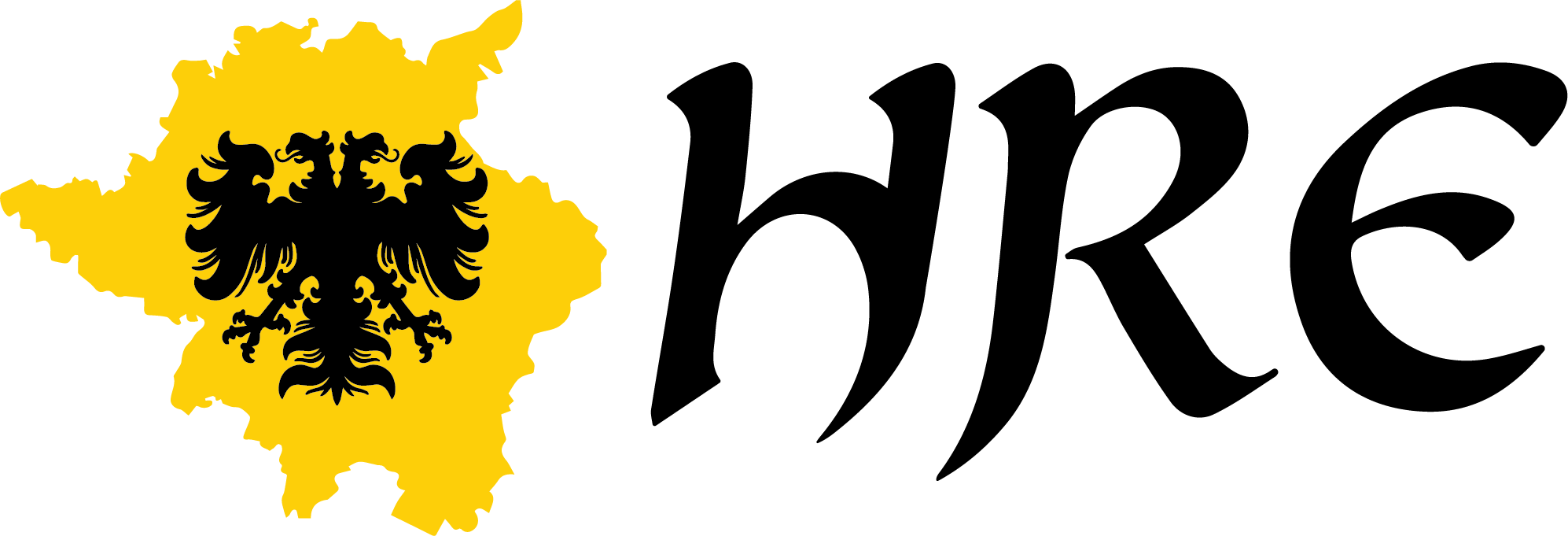Duchy of Guelders
Geldern Castle was built in the early 12th century and became the seat of a county that had already begun developing nearly 50km to its south. Initially, the county exercised no sovereignty, but administered territory under the sovereignty of other countries. Over the centuries, however, it began acquiring its own territory, particularly in what is now the Gelderland province of the Netherlands (well to the north of Geldern castle). By 1339, the county had acquired extensive territory and was elevated to a duchy. Soon thereafter, the administration of the duchy was divided among four quarters:
- An upper (southern) quarter consisting of territory around Geldern (in modern Germany) and Roermond (in the modern Netherlands).
- Three lower (northern) quarters, each centered on one of the following cities in the modern Netherlands:
- Arnhem
- Nijmegen
- Zutphen
After becoming a duchy, however, Guelders began losing territory. Within modern Germany, the biggest losses were those of Emmerich and Goch, over which Cleves took administrative control in 1355. In 1473, Guelders was conquered by the Burgundians. At that time, Cleves permanently asserted full sovereignty over Emmerich and Goch. After the Burgundian defeat of 1477, the previous rulers of Guelders (with support from France) engaged in a prolonged struggle with the Hapsburgs for control of Guelders, succeeding in 1492 and even capturing some neighboring Netherlandic territory in the process. After the noble line died out in 1538, sovereignty passed to the Duke of Jülich, Cleves, and Berg, but he was forced to cede the duchy to the Spanish Hapsburgs in 1543. Guelders thus became part of the Spanish Netherlands.
I start the database for the portion of the upper quarter that is now in Germany at that point. (Whether I ever add the Netherlandic portions to the database remains to be decided.) Despite their current German status, however, I recognize places in Guelders as being in the Spanish Netherlands (i.e., outside of any definition of Germany) until the upper quarter was partitioned in 1713. The partition created three new countries, each in a different nation, which I distinguish from one another by adding their primary city to their simplified name, as follows:
- Guelders-Geldern in the north, which became part of the Kingdom of Prussia. It included territory in both modern Germany and the Netherlands. By the time the French occupied the territory in 1794 (when the database ends), the non-Netherlandic portions had become culturally German.
- Guelders-Roermond in the south, which became part of the Austrian Netherlands. It was mostly in the modern Netherlands, but spilled over into Belgium and Germany. Places now in Germany are included in the database, but are never identified as being part of a German nation.
- Guelders-Erkelenz, also in the south, which became part of Wittelsbachian Germany and was administered as part of the Duchy of Jülich.
In addition to the above three countries, a fourth section, also in the south, became the state of Obergeldern within the United Netherlands. (It’s status was more that of a territory than a state.) It is entirely excluded from the database.
The only boundary change occurring during the period covered by the database involved the village of Hamb. Admininstrative responsibility for the village shifted to the Duchy of Cleves in 1708 (making its simplified country name “Guelders-Cleves”). In 1780, Cleves assumed full sovereignty over the Herrschaft.
Subdivisions of the Duchy of Guelders that are now in Germany
- GUELDERS-GELDERN AFTER 1713 -
- Stadt Geldern 1543 - 1794
- Niederamt Geldern 1543 - 1794
- Vogtei Geldern 1543 - 1794
- Stadt and Amt Straelen 1543 - 1794
- Stadt and Amt Wachtendonk 1543 - 1794
- Amt Kriekenbeck 1543 - 1794
- Herrlichkeit Klein-Kevelaer 1543 - 1794
- Herrlichkeit Rayen 1543 - 1794
- Herrlichkeit Twisteden 1543 - 1794
- Herrlichkeit Walbeck 1543 - 1794
- Herrschaft Hamb 1543 - 1780
- GUELDERS-ROERMOND AFTER 1713 -
- Herrschaft Elmpt 1543 - 1794
- GUELDERS-ERKELENZ AFTER 1713 -
- Herrschaft Erkelenz 1543 - 1794
